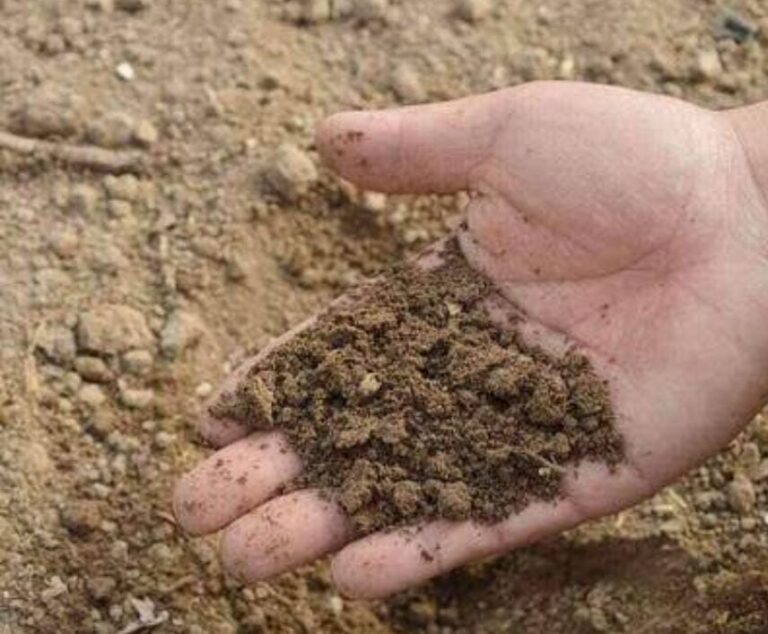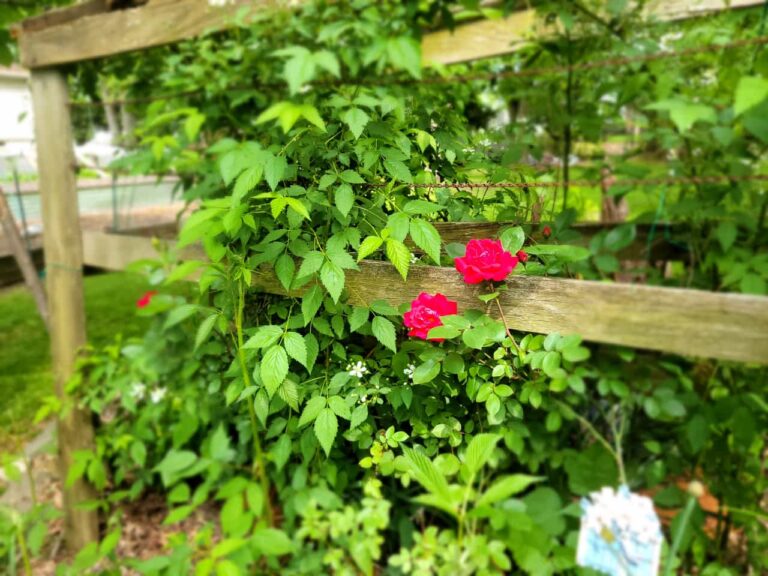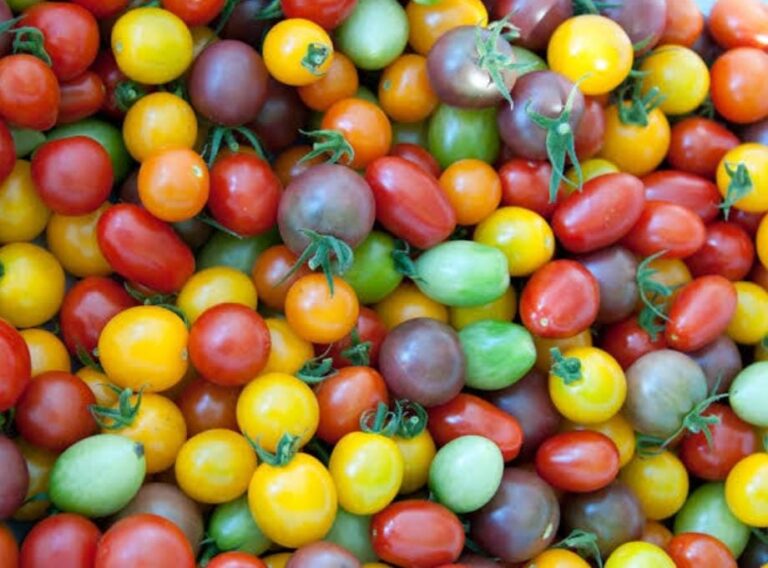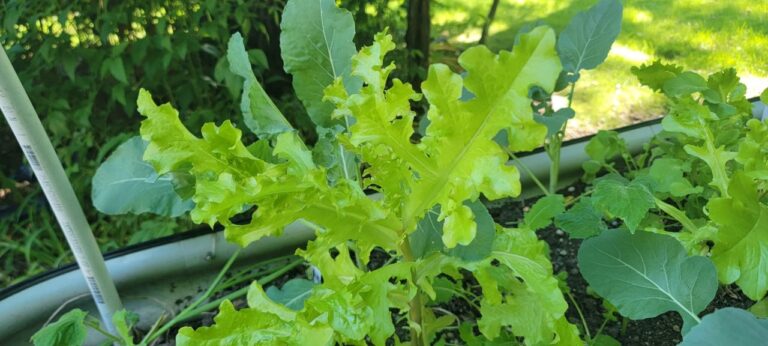6 Common Types of Garden Soil: An Ultimate Guide
Introduction
Home gardening is both an art and a science, and the quality of different types of garden soil determines the success of your garden. Plants require certain nutrients to survive and the appropriate type of soil to meet their demands. In this article, we’ll look at the many types of soil used in home gardening, their qualities, benefits, and recommended plant applications. Whether you’re a beginner or an expert gardener, recognizing these soil types will help you succeed.
1. Loamy Soil: The Gardener’s Dream
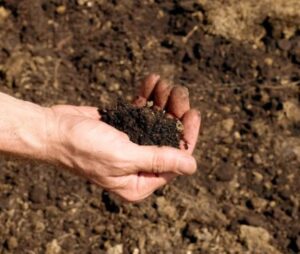
Loamy soil is a well-balanced blend of sand, silt, and clay that is widely regarded in all types of garden soil and considered ideal for most plants. It holds moisture while providing appropriate drainage and is nutrient-rich, making it perfect for veggies and decorative plants.
Key features
- The texture: Its texture is crumbly and simple to deal with
- Water Retention: Captures moisture without getting soggy
- Nutrient content: Rich in critical minerals and organic materials
Ideal for
Loamy soil is ideal for growing tomatoes, roses, herbs, and root crops such as carrots. If your garden beds appear drab, enriching the soil with compost helps keep the loam fertile for years.
Sandy Soil: Excellent for Quick-Draining Gardens
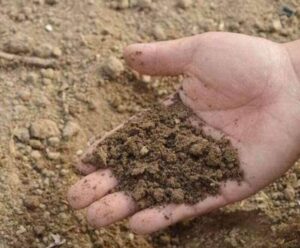
Another soil, among the types of garden soil is sandy soil is made up of large, gritty particles that provide excellent drainage, making it perfect for plants that dislike wet roots. However, because of its porous structure, it may require frequent fertilizing and irrigation.
Key features
- The Texture: Gritty, with big particles
- Drainage: Quick-draining, prevents root decay
- Nutrient retention: This soil is poor so nutrients wash away quickly
Ideal for
Succulents, lavender, and Mediterranean plants such as rosemary flourish on sandy soil. Raised garden beds with sandy mixtures are ideal for decreasing the risk of over-watering.
Improvement Tips
Adding organic materials, such as compost or coconut coir, improves moisture retention and nutrient availability.
3. Clay Soil: Rich in Nutrients but Challenging to Manage
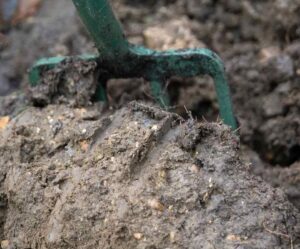
When we talk about types of garden soil, we must not forget this underrated gem called clay soil. Clay soil consists of large, gritty particles that provide excellent drainage, making it perfect for plants that dislike wet roots. However, because of its porous structure, it may require frequent fertilizing and irrigation.
Key features
- The Texture: Dense and sticky when wet; hard when dry
- Drainage: Slow and prone to waterlogging
- Nutrient Content: Plants have limited access to highly nutritious soil due to compaction
Ideal for
Clay soil is ideal for plants that prefer wetness, such as asters, hostas, and irises. It can also benefit fruit trees and shrubs if supplemented with organic matter to increase aeration.
Improvement Tip
Adding gypsum or coarse sand helps break up the dense structure and make it more workable with time and I must say one of the best in all types of garden soil.
5. Silty Soil: Fine and Fertile

Silty soil is smooth and mineral-rich, making it one of the most fertile varieties. Its particles are smaller than sand but larger than clay, resulting in a delicate texture. Although it maintains moisture well, excessive use might cause it to compress.
Key Features
- The Texture: This soil type is silky, smooth, and lightweight
- Water Retention: It holds more water than sandy soil
- Fertility: Promotes healthy plant growth, but may become dense when damp
Ideal for
Silty soil is ideal for water-loving veggies like cucumbers, lettuce, and spinach. Flowers like peonies and lilies also thrive in this nutrient-rich environment. It could be considered beneficial in home gardens in other types of garden soil.
Improvement Tip
Adding organic mulch and compost can maintain structure and reduce compaction.
Peaty Soil: The Organic Powerhouse in All Types of Garden Soil
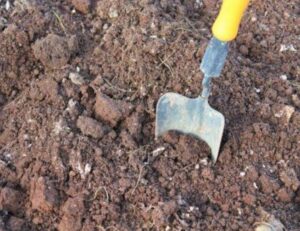
Peaty soil is another hidden treasure of nature among other types of garden soil. It has a high concentration of organic matter and degraded plant material, giving it a dark, spongy texture. While it is excellent for water retention, it is slightly acidic, thus some plants may require pH adjustment.
Key Features
- The Texture: This type of garden soil is spongy, bright, and dark
- Water Retention: Absorbs moisture efficiently
- pH levels: It is typically acidic but can be neutralized with lime
Ideal for
Peaty soil is suitable for acid-loving plants like blueberries, azaleas, and rhododendrons. It also provides a fantastic medium for starting seeds.
Improvement Tip
While using peat-based compost blends in planters or garden beds can promote healthy growth, sustainability activists recommend replacing peat with alternatives such as coir to safeguard natural peatlands.
6. Chalky Soil: Alkaline and Nutrient-Rich

Chalky soil is recognized for its alkaline composition, which makes it exceptional among other types of garden soils. It might limit the growth of acid-loving plants. It contains bits of limestone or chalk and drains swiftly, providing calcium to plants. However, because nutrients are less available to roots, feeding regularly may be necessary.
Key Features
- The Texture: This is light and stony
- pH Levels: Alkaline, usually exceeding 7.5
- Drainage: Quickly draining, lowering the possibility of waterlogging
Ideal for
Lavender, clematis, and ornamental grasses thrive on calcareous soil. If you have natural chalk beds, planting alkalinity-tolerant shrubs will improve the appearance of your yard.
Improvement Tip
Organic fertilizers and sulfur can lower alkalinity and increase nutrient availability for a broader range of plants.
Quality Enhancement Tips
1. Compost-Enriched Soil: A Boost for All Types
Among all types of garden soil, compost-enriched soil is a plant health powerhouse, combining natural soil structure with the high organic content of decomposed plant and animal materials. Compost improves the soil’s physical qualities by encouraging aeration and drainage by boosting moisture retention. It promotes the growth of beneficial microorganisms, fungi, and earthworms by increasing the organic content of the soil, allowing nutrients to be more readily available to plants. This biologically active environment promotes soil fertility and long-term plant growth.

One of the most significant advantages of compost-enriched soil is its capacity to progressively provide essential nutrients like nitrogen, phosphate, and potassium. Unlike artificial fertilizers, which can cause nutrient imbalances and runoff, compost gradually releases these components, lowering the risk of leaching and providing a consistent supply to plants. Furthermore, compost serves to buffer soil pH, keeping it within a range suited for most crops and flowers, while also binding harmful metals, preventing them from hurting plants.
Compost is versatile enough to benefit nearly any type of garden soil. It improves water retention and nutrient retaining capacity, preventing quick drying as in sandy soil. Compost loosens compacted particles in thick clay, which improves root penetration and oxygen availability. Even garden beds with loamy soil benefit from regular composting since it replenishes nutrients and prevents progressive degradation over time. Compost-enriched soil also aids erosion control by binding soil particles, particularly on inclined sites.
Composting decreases the demand for synthetic inputs and promotes environmentally friendly farming methods. It benefits vegetable gardens, flower beds, and potted plants, promoting healthy development and abundant yields. Compost-enriched soil, whether applied as a soil amendment or mulch, promotes resilience, allowing varied plants to thrive while contributing to long-term soil health for all types of garden soil.
2. Potting Mixes: Tailored Solutions for Containers
Potting mixes are specifically developed growing mediums for plants grown in containers when natural soil may not give optimal conditions. Unlike garden soil, which can get compacted in small spaces, potting mixes are light and well-aerated, enabling healthy root growth. These mixes often include organic ingredients like peat moss, coconut coir, or compost, and inorganic additives like perlite, vermiculite, and sand, which help with drainage and moisture retention. The flexible structure of potting mixes avoids waterlogging, which lowers the risk of root rot, a major problem in container gardening.
In addition to providing a physical environment conducive to root growth, many potting mixes are pre-fortified with nutrients and slow-release fertilizers, which provide plants with critical elements over time. Some mixes are also designed for specific plant varieties, such as cactus, orchids, or vegetables, with each having a distinct mixture to fulfill their water and nutrient requirements. Potting mixes may also incorporate wetting agents to ensure even moisture distribution throughout the container. These specialty soils are great for indoor plants, hanging baskets, and patio containers, providing optimal conditions in tight places. Overall, potting mixes provide a dependable and adaptable option for container gardening, promoting healthy plant growth across a wide range of species.
3. Topsoil: A Versatile Base Layer
Topsoil is the top layer of soil, typically 5 to 10 inches deep, and contains organic matter, minerals, and microorganisms necessary for plant growth. It is the foundation for many garden projects, providing a fertile condition for seed germination and root establishment. This layer promotes biological activity by harboring beneficial species such as earthworms and bacteria, which improve nutrient cycling and soil structure. Topsoil composition varies by region, but it typically comprises a mix of sand, silt, clay, and organic material, making it ideal for correcting poor-quality soil.
One of the topsoil’s primary functions is moisture regulation—retaining adequate water for plant uptake while letting excess to drain, so minimizing waterlogging. It also helps to anchor plant roots, providing stability and proper airflow to prevent root suffocation. Topsoil is commonly used in landscaping to level the ground, create new garden beds, and develop lawns that promote even growth. It makes a good substrate for stacking compost or mulch, which improves soil fertility over time. Topsoil can be supplemented with organic matter to increase nutrient content and improve physical characteristics. Topsoil, whether used to grow flowers, vegetables, or turf grass, provides the necessary structure to promote healthy plant development.
4. Vermiculite and Perlite-Enhanced Soil: Light and Airy
Vermiculite and perlite are natural minerals that are added to soil mixtures to increase aeration, drainage, and moisture management, making them ideal for container gardening. Perlite is a volcanic glass that, when heated, expands into lightweight, porous particles, improving soil aeration and avoiding compaction. This improves oxygen flow to the roots, lowering the danger of asphyxia and root disease. Vermiculite, on the other hand, is a mica-based mineral that expands when heated, resulting in spongy granules that can hold moisture and nutrients. It promotes regular hydration by absorbing water and slowly releasing it to plant roots.
These additions work together to create a well-balanced growing medium appropriate for plants like herbs, vegetables, and houseplants that need both good drainage and moisture. Perlite promotes fast water discharge and prevents saturated soil, but vermiculite holds moisture for plants that require more consistent access to water. These minerals are especially important in seedling potting mixes because they create an ideal environment for young roots to flourish without risk of overwatering. Furthermore, vermiculite and perlite help to promote sustainable gardening by lowering the need for frequent watering. Their lightweight nature also makes soil easier to handle and carry, making them ideal for indoor and vertical gardening applications.
Conclusion
Every plant has distinct requirements, and choosing the correct type of soil is critical to maximizing its potential. Most garden plants like loamy soil, whereas drought-tolerant types thrive in sandy soil. Clay soil, while challenging, may be converted with additions, while peaty soil is ideal for acid-loving plants. Potting mixes, compost, and additives like as vermiculite provide container gardeners more versatility.
Understanding the differences between types of garden soil allows you to customize your gardening tactics to your plants’ needs and produce a thriving garden. Happy gardening!


